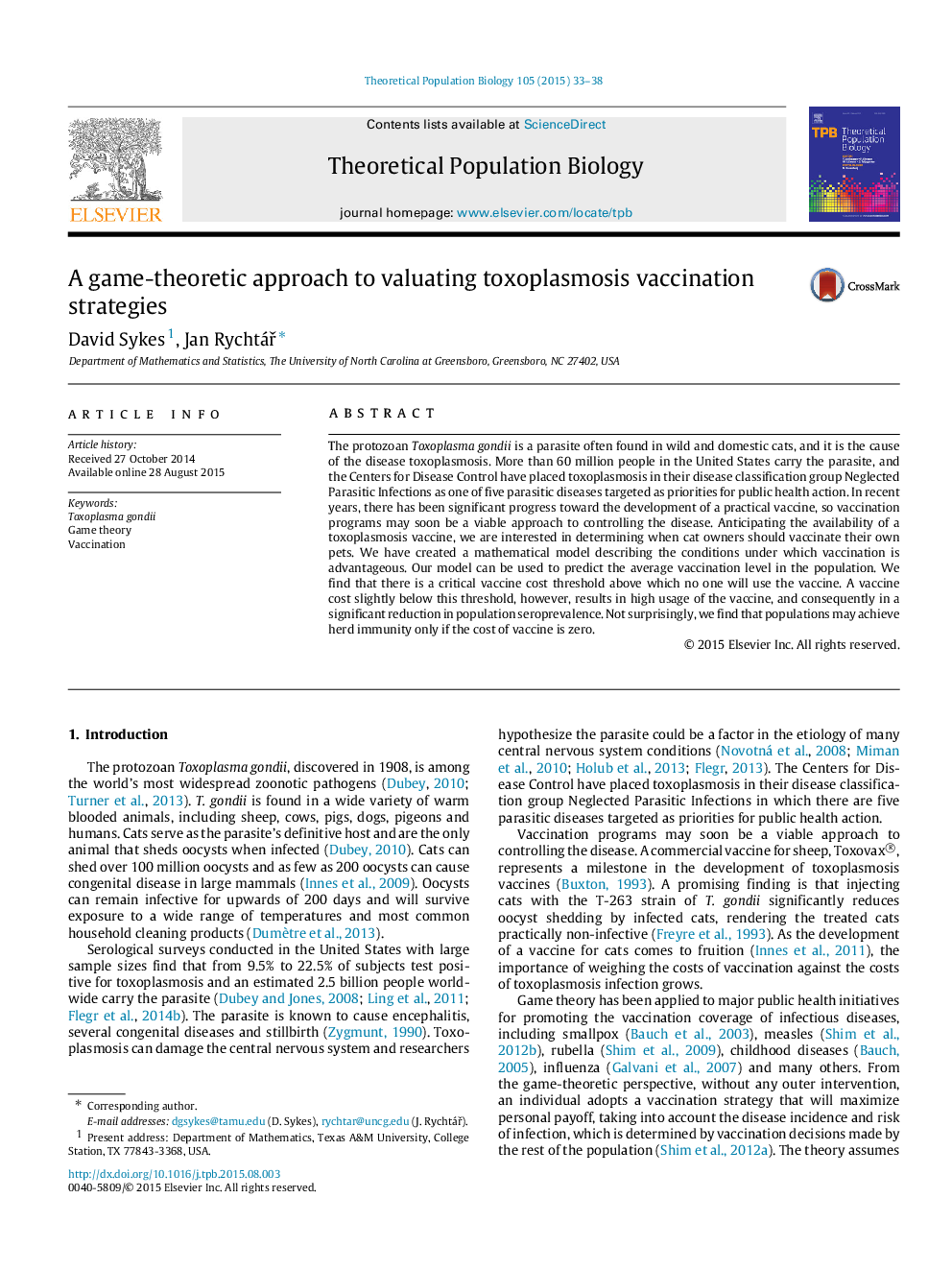| Article ID | Journal | Published Year | Pages | File Type |
|---|---|---|---|---|
| 4502298 | Theoretical Population Biology | 2015 | 6 Pages |
The protozoan Toxoplasma gondii is a parasite often found in wild and domestic cats, and it is the cause of the disease toxoplasmosis. More than 60 million people in the United States carry the parasite, and the Centers for Disease Control have placed toxoplasmosis in their disease classification group Neglected Parasitic Infections as one of five parasitic diseases targeted as priorities for public health action. In recent years, there has been significant progress toward the development of a practical vaccine, so vaccination programs may soon be a viable approach to controlling the disease. Anticipating the availability of a toxoplasmosis vaccine, we are interested in determining when cat owners should vaccinate their own pets. We have created a mathematical model describing the conditions under which vaccination is advantageous. Our model can be used to predict the average vaccination level in the population. We find that there is a critical vaccine cost threshold above which no one will use the vaccine. A vaccine cost slightly below this threshold, however, results in high usage of the vaccine, and consequently in a significant reduction in population seroprevalence. Not surprisingly, we find that populations may achieve herd immunity only if the cost of vaccine is zero.
